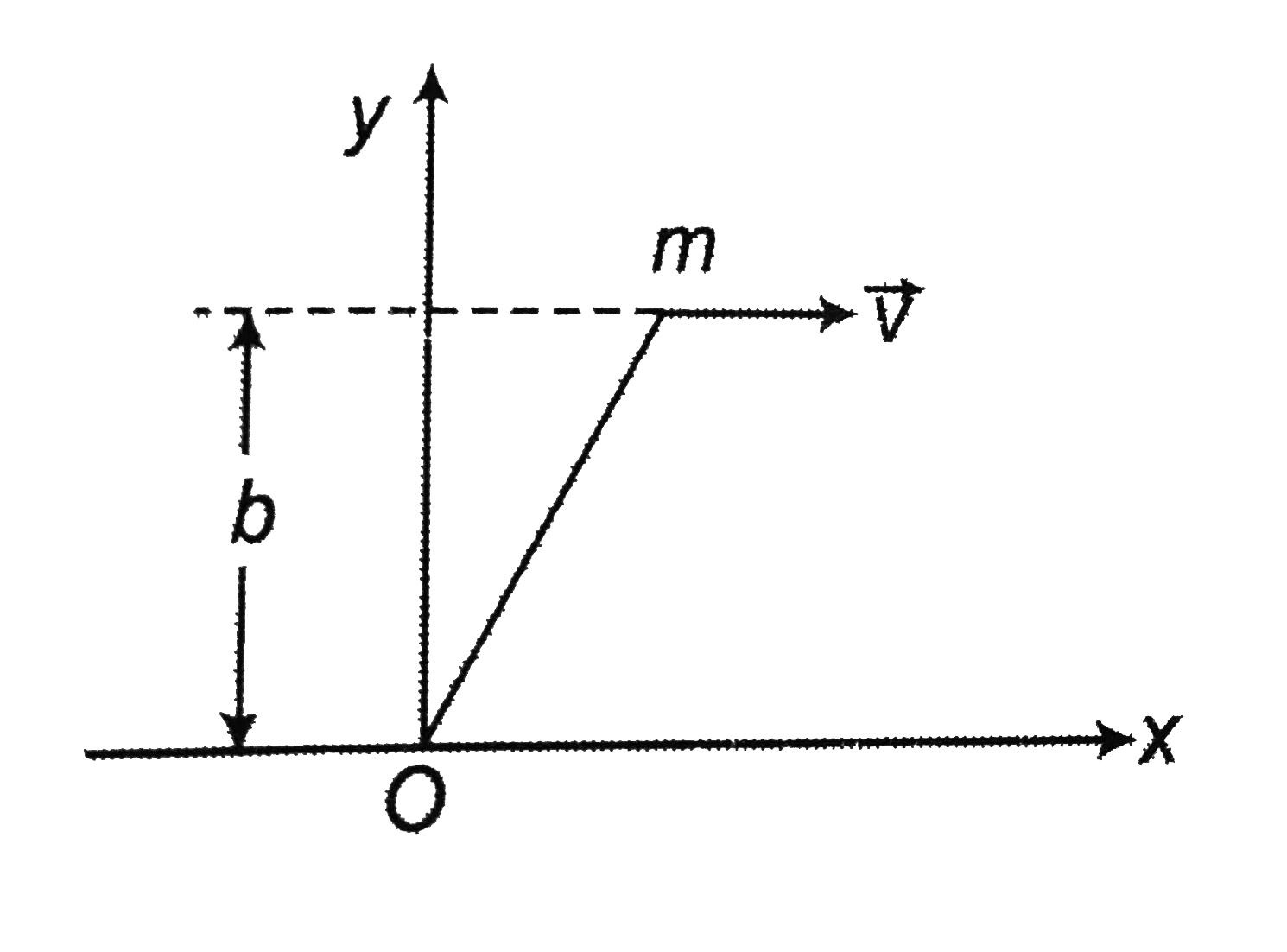Find the angular momentum of the particle about O in the following situations.
(a) A particle of mass m moving with velocity v parallel to the x-axis at distance d from it.
(b) A particle of mass m moving with velocity v on a line y=x+3.
(a) 
Angular momentum of particle about O
= linear momentum of particle ×⊥ar distance from O
=mvd
In the vector form
→l=→r×→p=→r×m→v
=(dˆj)×(mvˆi)
=−mvdˆk
The direction of angular momentum is inside the plane of paper, i.e. along the −z -direction.
(b) y=x+3, comparing it with straight line equation y=mx+cm=tanθ=1 , a line makes an angle θ=45∘ with the +x−axis and intercepts on the y-axis is 3 
Drop a perpendicular from O to the line y=x+3
OA=d=3sin45∘=3√2
Angular momentum about O
= linear momentum ×⊥ar distance from O
=mv×3√2=3mv√2
Topper's Solved these Questions
Similar Questions
A particle of mass 2m moving with velocity v strikes a stationary particle of mass 3m and sticks to it. The speed of the system will be
View SolutionIf the particle of mass m is moving with constant velocity v parallel to x-axis in x-y plane as shown in (figure), Find its angular momentum with respect of origin at any time t.

View Solution
Knowledge Check
The de - Broglie wavelength associated with the particle of mass m moving with velocity v is
Ah/mvBmv/hCh/2vDm/hvA particle of mass m is moving with constant velocity v parallel to the x-axis as shown in the figure. Its angular momentum about origin O is
 AmvbBmvaCmv√a2+b2Dmv(a+b)
AmvbBmvaCmv√a2+b2Dmv(a+b)A particle of mass m moves along line PC with velocity v as shown. What is the angular momentum of the particle about O?
 AmvLBmvlCmvrDZero
AmvLBmvlCmvrDZero
A particle of mass m moves along line PC with velocity v as shown. What is the angular momentum of the particle about P?

View SolutionA particle of mass m moves along line PC with velocity v as shown. What is the angular momentum of the particle about O?

View SolutionA particle of mass 2m moving with velocity v strikes a stationary particle of mass 3m and sticks to it . The speed of the system will be
View SolutionA particle of mass m moving with velocity v strikes a stationary particle of mass 2m and sticks to it. The speed of the system will be.
View SolutionIf a particle of mass m is moving with constant velocity v parallel to x-axis in x−y plane as shown in fig. Its angular moment with respect to origin at any time t will be
View Solution